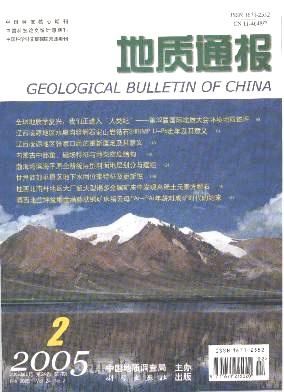WANG Yanbin1,CHEN Wen1,ZENG Pusheng21. Beijing SHRIMP Center,Institute of Geology,Chinese Academy of Geological Sciences,Beijing 100037,China,2. Institute of Mineral Resources,Chinese Academy of Geological Sciences,Beijing 100037,China. Constraints of sericite 40Ar-39Ar ages on the metallogenic epoch of the Jinman vein copper deposit in the Lanping basin, northwestern Yunnan[J]. Geological Bulletin of China, 2005, 24(2): 181-184.
| Citation: |
WANG Yanbin1,CHEN Wen1,ZENG Pusheng21. Beijing SHRIMP Center,Institute of Geology,Chinese Academy of Geological Sciences,Beijing 100037,China,2. Institute of Mineral Resources,Chinese Academy of Geological Sciences,Beijing 100037,China. Constraints of sericite 40Ar-39Ar ages on the metallogenic epoch of the Jinman vein copper deposit in the Lanping basin, northwestern Yunnan[J]. Geological Bulletin of China, 2005, 24(2): 181-184.
|
Constraints of sericite 40Ar-39Ar ages on the metallogenic epoch of the Jinman vein copper deposit in the Lanping basin, northwestern Yunnan
-
WANG Yanbin1,CHEN Wen1,ZENG Pusheng21. Beijing SHRIMP Center,Institute of Geology,Chinese Academy of Geological Sciences,Beijing 100037,China,2. Institute of Mineral Resources,Chinese Academy of Geological Sciences,Beijing 100037,China
-
Abstract
Located tectonically on the western margin of the Lanping basin on the northeastern side of the main India-Asia collision zone, the Jinman vein copper deposit occurs in Mesozoic terrestrial sandstone and mudstone. It is a new type of copper deposit closely associated with continental exhalation. Its metallogenic epoch is now still in dispute. The copper-bearing hydrothermal alteration mineral sericite beside the principal orebody of the Jinman copper deposit was analyzed using the conventional 40Ar/39Ar stepwise heating dating method, and three 40Ar/39Ar apparent average ages, namely, 88, 67 and 37 Ma, were obtained. According to these ages, combined with the geological setting of ore deposition in the Lanping basin, the authors think that the formation of the Jinman copper deposit underwent mineralization at 67 Ma in the early stage and that at 37 Ma in the late stage, which were superimposed on each other, with the latter representing the main formation age of the Jinman copper deposit. The two mineralization ages of the Jinman copper deposit may be interpreted as the isotopic age information left by major tectonic events such as the India-Tibet collision (in the Paleocene) and strike-slip motion-pulling-apart (in the Eocene) in the ore deposit, implying the effects of the Paleocene tectonism and Eocene tectonomagmatic metallogenesis on the formation of the regional metallogenic zone in northwestern Yunnan.
-

-
-
Access History







 DownLoad:
DownLoad: